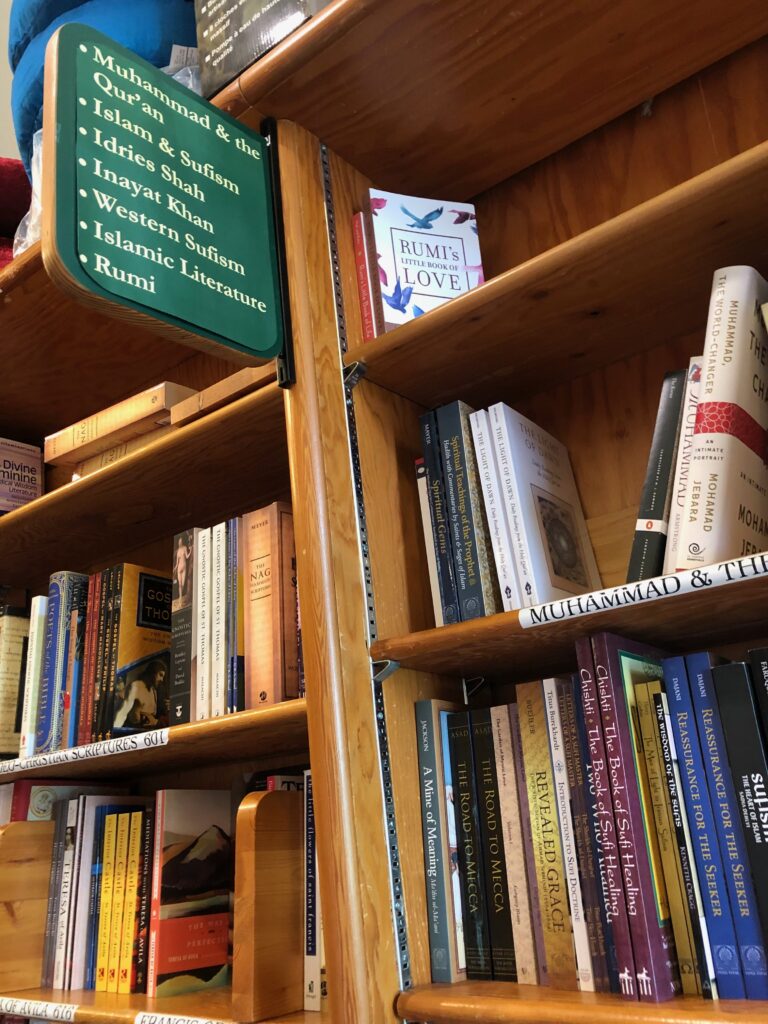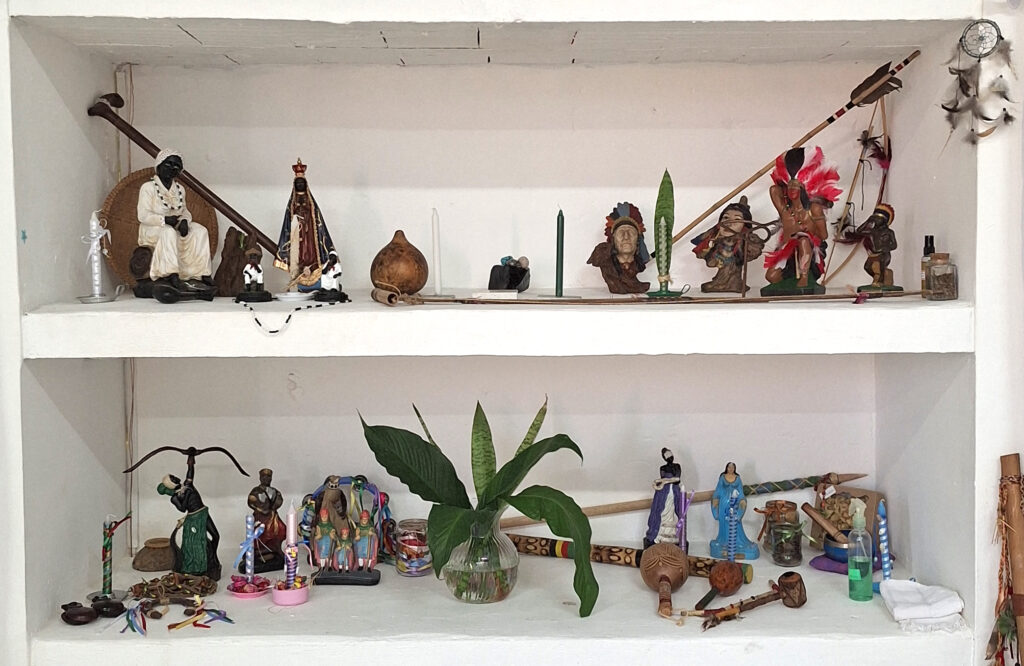by Raquel Romberg
The CAS-E team is very pleased to announce that we will have a special guest in Erlangen in October and November 2024: Professor Michael Taussig will be joining us for some exciting events to share his extensive knowledge and insights and for more informal discussions with fellows and guests.

Prof. Michael Taussig is Distinguished Fellow in Residence at CAS-E. He will give a special lecture for the FAU and the Erlangen community on October 22, 2024 at 18:15-19:45 at the Orangerie on “Fairy Castles Gliding Like Swans: How Daydreaming Affects Writing and Analysis.” In this lecture Taussig considers the combined impact of drawing and daydreaming on our writing. He does it as he reflects on his Palma Africana, concerned with the rapid spread of an oil palm plantation in northern Colombia, enabled by paramilitary violence.
Please register to attend in person here, or follow the lecture on Zoom .

In addition to his lecture, he will lead a six-week colloquium for CAS-E fellows and selected FAU and external scholars to discuss his most recent works. In his most recent contributions, for example, he reflects on ethnographic drawings as forms of visual testimony and critical reflection that evoke distant worlds and times and bring them closer to the viewer. At the CAS-E colloquia, we will have the opportunity to discuss these evocations.
A limited number of places are available and free, but accommodations and travel are not covered. Please send your CV and a short paragraph describing your interest to raquel.romberg@fau.de by October 1 at the latest.

Michael Taussig is an Australian-American anthropologist and professor emeritus at Columbia University. He is known worldwide for his provocative and innovative ethnographic work and his groundbreaking interdisciplinary contributions to critical studies of commodity fetishism, magic, mimesis, the senses, violence, art, and ethnofictional writing styles. As one of anthropology’s most influential thinkers, his critical insights and bold, experimental writing style have resonated across disciplines, from colonial and postcolonial history to political science, religious studies, environmental studies, cultural studies, art and critical theory.

Michael Taussig studied medicine in Australia before completing a PhD in anthropology at the London School of Economics. Armed with this diverse academic background and his wide and deep reading of the Frankfurt School philosophers and other influential writers and thinkers, he has undertaken long-term fieldwork trips in Colombia as well as short ethnographic journeys to various parts of the world over the last half century.
His multi-layered way of envisioning the past and our present combines colonial and postcolonial reflections on economic forces, commodity production, technology, violence, the environment, the exploitation of natural resources, fashion, magic, sorcery, and the senses. I find that one of his most valuable contributions is to reverse the way we understand historical processes by showing, for example, that fear and fascination in colonial contact zones gave rise to new ontologies. One such new being is the “devil”, which did not exist in Latin America before the effects of colonialism and capitalism. A very productive idea that was useful for my own work (Romberg 2003a, 2003b, 2005, 2016a, 2016b) has been that healing and magic practices emerged in the colonial period as a result of terror and fascination with the Other, as well as the mutually reflecting and distorting mirrors through which colonizers and colonized gazed at each other. In one of these mimetic spaces of death and negation, Taussig shows (1987) that, for example, the colonizers sought out the indigenous people for their supposedly wild, i.e. powerful healing powers and killed them for their wildness.

Taussig’s critical depictions take the reader on historical journeys into the present that are electrifying, surprising, unsettling and disturbing. In a way, he unravels things that we might know, but are kept concealed from our consciousness. How can we rethink the everydayness and impact of contemporary reproduction technologies such as photography, film and sound recording? In his Mimesis and Alterity—the book that has most shaped my own thinking—Taussig (1993) develops the mimetic faculty as a political framework that mediates alterity. He proposes “first contact” and “second contact” between different groups brought together by coloniality and postcoloniality and explores the labor of the mimetic faculty in reshaping culture or “second nature.” Taussig leads his readers on off-beat paths, offering new sources and imaginative assessments of established notions of socio-historical realities. He makes tangible what one already “knew without knowing.”
By sparking a unique form of understanding for things that are felt but concealed, Taussig’s narrative reorients our attention to how culture uses nature to build our sense of “second nature”. What Color is the Sacred? (2009), for example, is about the histories of nature, exploitation, and manufacture that are repressed when wearing fabrics such as calico, damask, muslin, chintz, and denim—mimetically reappearing in the production of commodities as we become “extensions of that world, or at one with it.” Similarly, My Cocaine Museum (2004) blurs the boundaries between organic and inorganic things, and shows how natural resources are intertwined not only with world history, colonialism and the technologies of extraction, the alchemy of transformation, commodification, and violence, but also with magic, the fear of powerlessness, fashion, sensuous memories, passions and transgressions.

Prof. Michael Taussig is certainly a refreshing addition to the activities of the third CAS-E year, as we continue to explore the contemporary flourishing of esoteric practices labeled as spiritual, magical, shamanic, and New Age, or considered as folk religions or new religious movements, depending on the theoretical perspective. Our interdisciplinary and global perspective will continue to gain momentum with upcoming discussions about the convoluted ways in which these esoteric practices are reshaping and revitalizing older practices in new contexts among new publics, creating new practices that incorporate new technologies, extending their influence globally, avoiding stigmatization or persecution, and using social media in worldwide activist projects. In short, Taussig’s participation in CAS-E will certainly encourage further engagement with the connection between esoteric practices and political forces, legal frameworks, governmental projects, environmental concerns, cultural and social processes, economic and consumer opportunities, and embodied, sensorial, and artistic aspects of experience and representation.
Taussig’s combined diachronic and synchronic approach resonates with CAS-E’s attention to contemporary esoteric practices, the historical entanglements of the past in the present, and the emphasis on their pragmatic aims and comparative aspects. In this way, we are encouraged to discuss alternative rationales underlying the various forms of esoteric practices, with the aim of foregrounding the analytical framework and public resonance underlying their study.
Selected Bibliography:
The Devil and Commodity Fetishism in South America (1980)
Shamanism, Colonialism, and the Wild Man: A Study in Terror and Healing (1987)
The Nervous System (1992)
Mimesis and Alterity: A Particular History of the Senses (1993)
Magic of the State (1997)
Defacement (1999)
Law in a Lawless Land: Diary of a Limpieza in a Colombian Town (2003)
My Cocaine Museum (2004)
Walter Benjamin’s Grave (2006)
What Color is the Sacred? (2009)
Fieldwork Notebooks (2011)
I Swear I Saw This, Drawings in Fieldwork Notebooks, Namely My Own (2011)
Beauty and the Beast (2012)
The Corn Wolf (2015)
Palma Africana (2018)
Mastery of Non-Mastery in the Age of Meltdown (2020)
And the Garden Is You: Essays on Fieldwork, Writingwork, and Readingwork (2024)
References
Romberg, Raquel. 2003a. From Charlatans to Saviors: Espiritistas, Curanderos, and Brujos Inscribed in Discourses of Progress and Heritage. Centro Journal 15 (2): 146-173
Romberg, Raquel. 2003b. Witchcraft and Welfare: Spiritual Capital and the Business of Magic in Modern Puerto Rico. Austin, TX: University of Texas Press.
Romberg, Raquel. 2005. Ritual Piracy: Or Creolization with an Attitude. New West Indian Guide 79 (3 & 4):175-218.
Romberg, Raquel. 2016a. Legitimate and Illegitimate Vernacular Religions in Colonial and Postcolonial Times: Historical and Anthropological Explorations of Ritual Indeterminacy. In Religious Diversity Today: Experiencing Religion in the Contemporary World. Volume 2: Ritual and Pilgrimage. Anastasia Panagakos (ed.). Santa Barbara, CA: Praeger, 189-214.
Romberg, Raquel. 2016b. The Magic of Mimesis: A Historically Informed Anthropology of Sympathetic Magic and Contact” Web blog post. Material Religions. 16 March 2016.
Raquel Romberg (PhD. University of Pennsylvania) is CAS-E Research Coordinator and the author of Witchcraft and Welfare: Spiritual Capital and the Business of Magic in Modern Puerto Rico (2003), and Healing Dramas: Divination and Magic in Modern Puerto Rico (2009).
____
CAS-E blogs may be reprinted with the following acknowledgment: “This article was published by CAS-E on September 30th, 2024.”
The views and opinions expressed in blog posts and comments made in response to the blog posts are those of the author(s) and do not necessarily reflect the views and opinions of CAS-E, its founders, its staff, or any agent or institution affiliated with it, nor those of the institution(s) with which the author is affiliated.
____
Image 1: “Professor Michael Taussig” (Photo by Michael Taussig)
Image 2: “Special CAS-E lecture by Michael Taussig on October 22, 2024” (Poster designed by Melika Lashkari)
Image 3: Books by Professor Michael Taussig (Photo by Raquel Romberg)
Image 4: Michael Taussig’s Drawing (1) (Photo by Michael Taussig)
Image 5: Michael Taussig’s Drawing (2) (Photo by Michael Taussig)
Image 6: Michael Taussig’s Drawing (3) (Photo by Michael Taussig)








